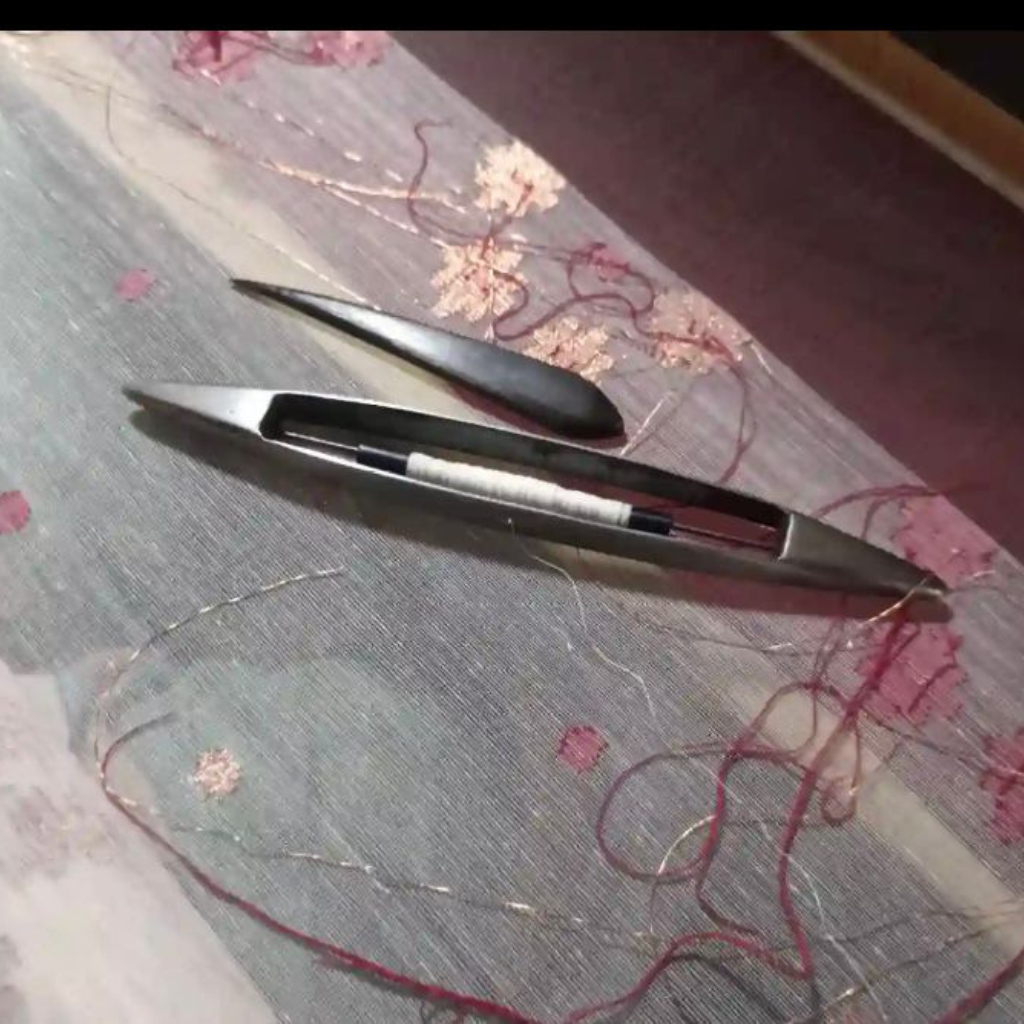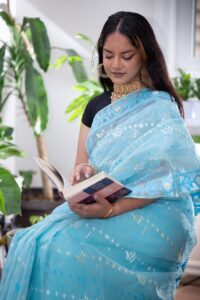The Jamdani saree, a delicate and intricate hand woven fabric. It holds a significant place in the rich
hanging of Bangladeshi textile history. Its origins can be traced back to ancient times, and over the
centuries. It has evolved into a symbol of timeless elegance and craftsmanship. This blog delves into the
fascinating of Jamdani sarees history, exploring their origins, evolution, cultural significance, and
enduring appeal.
Ancient Origins
Jamdani saree history, a Persian term, is a combination of “Jam,” meaning flower, and “Dani,” referring to a vase. The
name reflects the floral motifs that are characteristic of this weaving technique. The roots of Jamdani
can be traced back to the ancient Bengal region. It encompassing present-day Bangladesh. The art of
Jamdani weaving is believed to have originated over 2,000 years ago.
Flourishing during the Mughal Era
The golden age of Jamdani sarees began during the Mughal era in the Indian subcontinent, particularly
in the 17th and 18th centuries. The Mughal emperors, known for their love of art and luxury, patronized
the Jamdani artisans, elevating the craft to new heights. Under their royal patronage, Jamdani sarees
flourished. It becoming a symbol of status and elegance among the nobility.
The Art of Weaving
Jamdani weaving is a labor-intensive and intricate process that involves a combination of cotton and
gold or silver threads. Highly skilled weavers faithfully create the elaborate patterns, using a traditional
loom known as the ‘Tant.’ The weaving process involves interlacing the supplementary weft threads
with the regular weft threads. It’s resulting in the characteristic transparency and delicate texture of
Jamdani sarees.
Decline and Revival
The decline of Jamdani began during the British colonial rule, as cheaper machine-made textiles flooded
the market. The economic hardships faced by the weavers led to a decline in the traditional craft.
However, thanks to the efforts of a few passionate individuals and organizations in the late 20th
century. The art of Jamdani weaving experienced a revival. Government support and growing global
interest in traditional textiles contributed to the resurgence of this exquisite craft.
Cultural Significance
Jamdani sarees hold immense cultural significance in the regions where they are woven. They are an
integral part of Bengali weddings and other traditional ceremonies. The delicate motifs and vibrant
colors of Jamdani sarees are associated with celebration, joy, and auspicious occasions. The saree also
plays a vital role in preserving cultural heritage and fostering. A sense of identity among the
communities involved in its production.
Evolution and Modern Appeal
While Jamdani sarees remain steeped in tradition, contemporary designers have embraced the craft,
giving it a modern twist. The combination of traditional weaving techniques with innovative designs and
color palettes has captured the attention of fashion enthusiasts worldwide. Celebrities, fashionistas, and
even international runways have embraced Jamdani sarees, making it a sought-after fashion statement
beyond South Asia.
Challenges and Sustainability
Despite its resurgence, the Jamdani weaving tradition faces several challenges in the modern era.
Economic pressures, competition from mass-produced textiles, and the declining number of skilled
weavers pose significant threats to its sustainability. To protect this ancient craft, efforts are being made
to provide better working conditions for weavers, fair wages, and promote ethical and sustainable
practices.
Conclusion
The Dhakai Jamdani Saree weaves together a mesmerizing tale of artistry, history, and cultural heritage. Rooted
in ancient traditions, this handwoven fabric has weathered the test of time, retaining its elegance and
allure through the centuries. As we continue to celebrate the beauty of Jamdani sarees, let us also
embrace the responsibility of preserving and promoting this unique art form, ensuring that its exquisite
floral patterns and delicate craftsmanship continue to grace generations to come.


